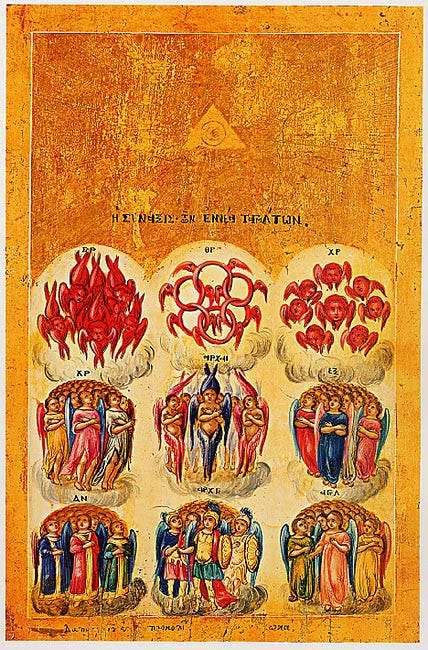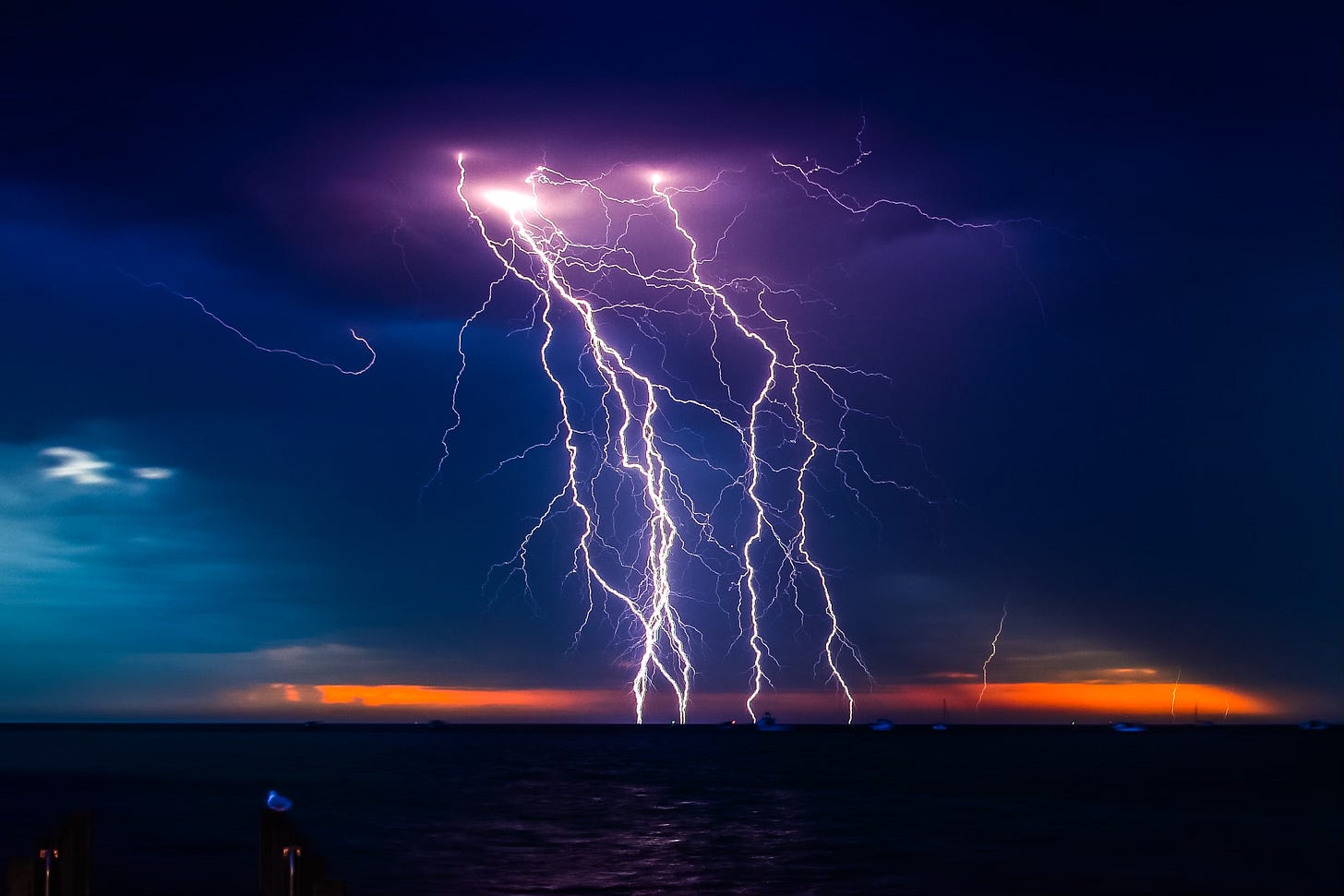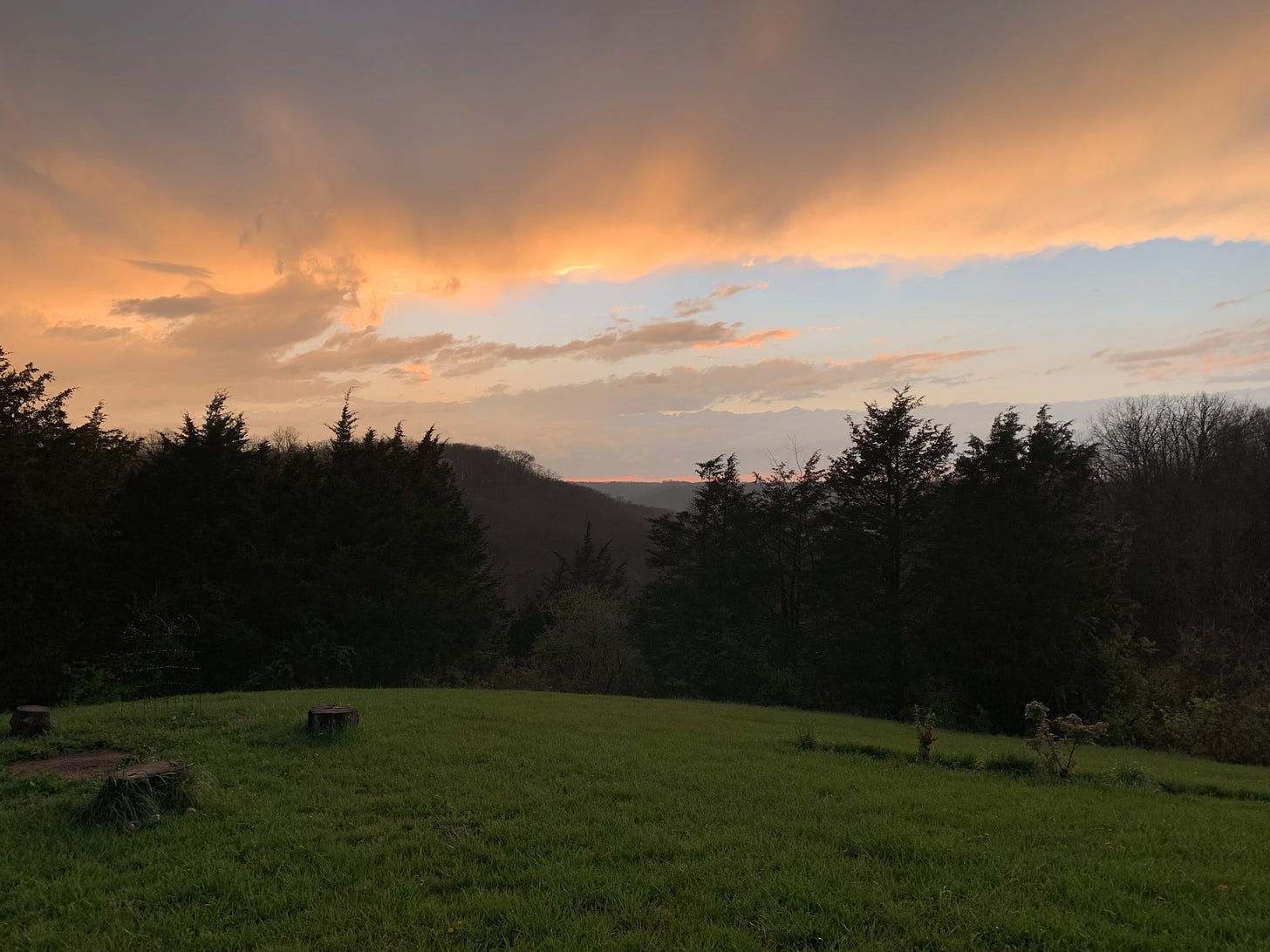Hi friends,
After having watched the last several rounds of rain pass us by, my thoughts have again turned to weather magic and rain prayers. Not that we’re in dire need or anything, our region is still recovering from catastrophic flooding just several weeks ago. But after working on planting all of our spring crops and then getting them weeded, we could use a good soaker about now. Not several inches, but one inch or maybe a bit more, would be good, falling slowly and gently throughout the night. It is difficult to describe the sensation of laying in bed, body dog tired from field work, listening to the steady fall of a good rain on the metal roof the house. The gratitude felt, and the deep rest which follows as one drifts asleep to the sound of the rain gives an indescribable feeling of peace and satisfaction. You have done all you can, tended the land and the crops, and now comes the blessing of rain. It is balm for a farmer’s soul.
So with all this in mind, I’m sharing this post from the archives, originally posted a year ago. Hopefully it will serve as a plea to the angels and gods who bring the rain to actually bring some here and not just everywhere around us. Again, we’re not desperate for rain, but I have been doing this a long time and have seen extended dry spells that start with floods and then continue with intermittent rains that miss our land, with weeks passing before we actually get a good rain. I’m hoping that despite the growing evidence that this variability is the new normal, that this growing season will be different.
After the Spring Equinox the farming year really begins to get underway and the farmer’s life is suddenly extremely busy. If the soil is dry enough for planting the lengthening days are filled with the work of tillage and sowing. Crops are planted and after hoping and praying for a break in the rain in order to get the work done, the farmer begins to wonder if the rain will return. Such is the life of the farmer, ever at the mercy of the whims of the weather.
Once the crops receive the needed rain and begin to germinate and grow, the tender leaves begin to unfurl, they are vulnerable to frosts and the depredations of hungry insects and herbivores. And once the crop is grown and near harvest, it is still not out of danger from the destructive power of a summer thunderstorm, which brings the potential for torrential downpours, violent winds, and the worst scourge of all: hail. A sudden hailstorm can quickly reduce a promising crop near harvest to mulch, bring with its destruction the possibility of economic ruin, and in the days when people lived and died by their harvests, death by starvation.
Among the most important duties of the shaman was that of the rainmaker. Magical control of the weather has continued to be a perennial concern of the public magician from ancient times. Much of what we call weather magic is indistinguishable from religious practice. Indeed, magic is often difficult to distinguish from religion in general. Some have made the point that the magician tries to compel the gods, while religion tries to entreat them. In practice, the difference between a faithful petitioner who is sure their petition will be answered and a magician is a very fine distinction. Many practitioners, myself included will use both methods, prayer and magic. Personally, since magic as I practice it involves prayer, I have trouble telling the difference.
A tale from the Talmud about a Jewish scholar and holy man who lived in the first century BCE, named Honi, nicknamed Honi the Circle Drawer (Honi HaMe’agel) from his use of magic circles in his work, illustrates the blurry line between wonder-working holy man and magician. The tale is as follows:
“It once happened that they petitioned Choni (An alternate English spelling) the Circle-Maker, “Pray that rain should fall.”
Said Choni to them, “Go, bring your Passover ovens indoors, so that they should not dissolve.”
Choni prayed, but no rain fell. What did he do? He drew a circle, stood inside it, and said to G‑d: “Master of the Universe! Your children turned to me because I am like a member of Your household. I swear by Your great name that I’m not budging from here until You have compassion on Your children!”
A rain began to drizzle.
Said Choni: “That’s not what I asked for. I asked for rains to fill the cisterns, trenches and reservoirs.”
The rains started coming down in torrents.
Said Choni: “That’s not what I asked for. I asked for rains of goodwill, blessing and generosity.”
A proper rain began to fall. But it continued to fall until the Jews went out of Jerusalem up onto the Temple Mount, because of the flooding caused by the rains. So they came to Choni and said: “Just as you prayed that the rains should fall, now pray that they should go away.” Said he to them: “Go and see if the Stone of Claims1 has dissolved yet . . .”
Shimon ben Shetach sent a message to Choni: “If not for the fact that you are Choni, I would have issued a decree of excommunication against you. But what can I do against you, who nags (מתחטא לפני) the Almighty and He fulfills your wish, like a child who nags his father and his father fulfills his wish . . .” (Talmud, Taanit 19a, chabad. org, accessed 3/27/24)
In the story, Honi is nearly excommunicated because of the dishonor he showed toward God, but was given a pass because of his special relationship with the divine.
There is almost certainly more to the story than the religious tale related here, which is pious, but with a touch of irony. Another example from Jewish magic may point us to the techniques employed by magicians such as Honi to induce the heavens to bring forth rain. The Talmudic tale refers to Honi as being like a member of God’s household, in other words, on familiar terms with God and His angels, calling upon them by name and expecting to be answered like a child who pesters his indulgent father. In Biblical mythology, many of the prophets and patriarchs were on intimate terms with God, but Adam, the first man, walked with God in the Garden of Eden and spoke to him personally. After the Fall, according to the Zohar, the multi-volume Kabbalistic commentary on the Torah, which discusses the esoteric secrets of the scriptures, Adam was given a book of secret divine wisdom by the archangel Raziel, which contained the secrets of the Divine Name of 72 letters and its keys and mysteries.
Many practitioners of Jewish magic sought the secrets of becoming a member of the Divine household, of calling upon God and the angels by name, with an intimacy far beyond that of ordinary mortals. In a cosmic order in which the divine will was executed by ranks of angels arranged in a hierarchical order around the Throne of God, the idea that one could ascend to the various heavens and communicate directly with the angels themselves would prove a very attractive one. The magician had only to perform the correct rituals, speak the proper passwords and sacred names and the gates would be opened for them and the angels would descend to serve them. In this cosmology there are angels placed over every aspect of creation.
In the Enochic literature, the three so-called Books of Enoch, the patriarch of the same name ascends to heaven , where the secrets of the divine realm are revealed and he is given a whirlwind tour of heaven before being elevated to the status of an angel himself. While in heaven, Enoch is shown the storehouses of the rain, snow, and hail, and we are told in one account the names of the angels ruling over the weather. In 3 Enoch, The Hebrew Book of Enoch, it is the high priest, Rabbi Ishmael, who ascends to the heavenly realm and is given the tour by the Archangel Metatron, who is none other than the transfigured Enoch. Metatron relates the story of his transformation and tells Rabbi Ishmael the names of the angels who rule the world and its elements. This detail is specifically interesting to our current study, because by having the names of the angels who rule the elements, they can be called upon and adjured to work for the magician. Here is a quote from 3 Enoch, detailing the names of the angels ruling the elements:
“These are the names of the rulers of the world: Gabriel, the angel of the fire, Baradiel, the angel of the hail, Ruchiel who is appointed over the wind, Baraqiel who is appointed over the lightnings, Za'amiel who is appointed over the vehemence, Ziqiel who is appointed over the sparks, Zi'iel who is appointed over the commotion, Za’aphiel who is appointed over the storm-wind, Ra'amiel who is appointed over the thunders, Ra’ashiel who is appointed over the earthquake, Shalgiel who is appointed over the snow, Matariel who is appointed over the rain, Shimshiel who is appointed over the day, Lailiel who is appointed over the night, Galgalliel who is appointed over the globe of the sun, 'Ophanniel who is appointed over the globe of the moon, Kokbiel who is appointed over the planets, Rahatiel who is appointed over the constellations.” (3 Enoch 14:4)
There are several grimoires that purport to be the lost book of Raziel, the Sefer Raziel, the oldest of which, the Sepher Ha-Razim, most likely dates from the 4th century C.E. Unlike the others, the Sepher Ha-Razim, purports to have been given by Raziel to Noah instead of Adam. It is a book of angel magic having much in common with both the mystical Jewish Hekhalot tradition of celestial ascent through various levels of heaven, and the practical syncretistic magic of the Greek Magical Papyri. The text details does discuss methods for contacting the angels of the Second Firmament, the “Heaven of Heavens” in which dwell the angels of snow, hail and moisture, but the rituals given are for decidedly different purposes than manipulation of the weather: love magic and binding the tongues of critics.
A similar text, though one of a much later date, the Sepher Rezial Hemelach, the Book of the Angel Raziel, does give us a ritual for calling upon angelic powers for securing rain for crops. This text, translated into English recently by Steve Savedow, from a 1701 Amsterdam compilation of various Hebrew manuscripts of unknown dates transcribed into one volume. It is a fascinating book which contains elements which are well known from the tradition of Solomonic magic, namely spirits who rule the seasons and hours. The text gives us these names of the entities who control the rain. Materiel or in the following example, Meterial, from the hebrew “matar” meaning “rain”, (combined with the theophoric suffix “el” or “al” meaning “of god”, often designating a name as belonging to an angel) is the only name common to both examples.
“These are the Malachim [angels] ruling over rain. When drought [comes] and [you] seek to make it rain, pray in supplication. Speak the names in this order: Melekial, Meremeremoth, Nohetial, Sebenial, Qokethial, Thenial, Gedial, Keremial, Yisha'aieh, Meterial, and Liethial. Speak the names of the Malachim seven times. Then take a white cock and purify it, cleansing it of all defilement. Remove blood and feathers, and take out the intestines. Fill it with frankincense and myrrh and saffron, the best peppers and the white blossoms of the white peppers, honey and milk, and aged wine. Then stand before the passing Sun and speak in petition: Lord, I stand before you in holiness and petition you to open the gates of the blessed storehouse. Allow the rain to flow down. Restore the earth from the blessed storehouse.
If rain does not fall at once, lay upon your face upon the earth. Speak the prayer and, after, speak the holy names of glory and honor. Offer a libation [make a drink offering] of the milk, honey, and wine seven times. Rain will fall quickly to restore the world. Keep yourself pure and humble, and all your works will succeed.” (Savedow, Steve, Sepher Rezial Hemelach, p.65)
To me, one of the most interesting things about these documents is their underlying cosmology. The people who wrote texts conceived of an animate cosmos regulated by the actions of beings with agency. Despite the fact that most of the names in these examples are different, the underlying assumptions of the magician about the universe is the same: the cosmos is alive, possessed of intelligence, Nature is the domain of intelligent spiritual agencies whose function is to administer the operations of the natural world. This way of seeing is common to many cultures around the world and we have discussed it elsewhere in depth. Briefly this is the principle of animism, which is fundamental to a magical worldview.
Furthermore these entities have names, which can be known and by which they can be addressed and deals made with them. Because these documents are Jewish in origin, they deal with angels who are seen to be obediently fulfilling the providential will of God. Likewise in the traditional polytheist systems, particularly the Hellenic, the forces of nature can be seen as gods and daimones executing the pronoia (forethought, providence) of the demiurge. I don’t really see much difference, honestly.
In the polytheist cosmology of ancient Greece and Rome, the daimones, from which we get the english word “demon”, were not seen to be evil, although they could be. All spiritual beings were daimones including spirits of the dead and even gods. So it is a generic term. It is also a specific term for a spiritual power that acts as an intermediary between the gods and the elemental world here on earth. Much like a lower order of angel like those we have been discussing that regulate the weather. Non-material, intelligent, conscious organizing principles, underlying physical nature. Not really unlike the morphogenetic fields of biologist Rupert Sheldrake or the Jungian archetypes perhaps. Noetic beings, in other words. (Noetic is often translated into English as “intellectual” or “intelligible”, but those words are freighted with so much baggage as to be useless in this context) Exactly how noetic beings interact with physical reality is a mystery, but perhaps, the physical and the spiritual are not two principles, but two aspects of a single principle, which is conscious and constantly transforming to create what we call reality.
Weather magic, as with all magic, operates necessarily in an enchanted, intelligent cosmos. This is in fact the kind of universe I believe we live in, or perhaps more accurately, it is the kind of universe the magician lives in and this is the secret to their success.
In the next post we will discuss the trajectory of weather magic into late antiquity and the early middle ages. There are some fascinating archeological finds that shed light on the practice of weather magic in this period, and we will take a look at those. We will also delve into some records from ecclesiastical historians and penitentials, that present us with some fascinating characters such as the heretic angel magician, Adelbert who was brought to trial by Saint Boniface (whom we last met cutting down an oak tree sacred to the god Donar in Saxony) in 745. Another fascinating set of characters we will cover are the weather magic protection racket the Tempestarii, who may have been either pagan priests turned weather magicians for hire or con-men fleecing vulnerable peasants, or both.










Hi, have you received your rains yet?